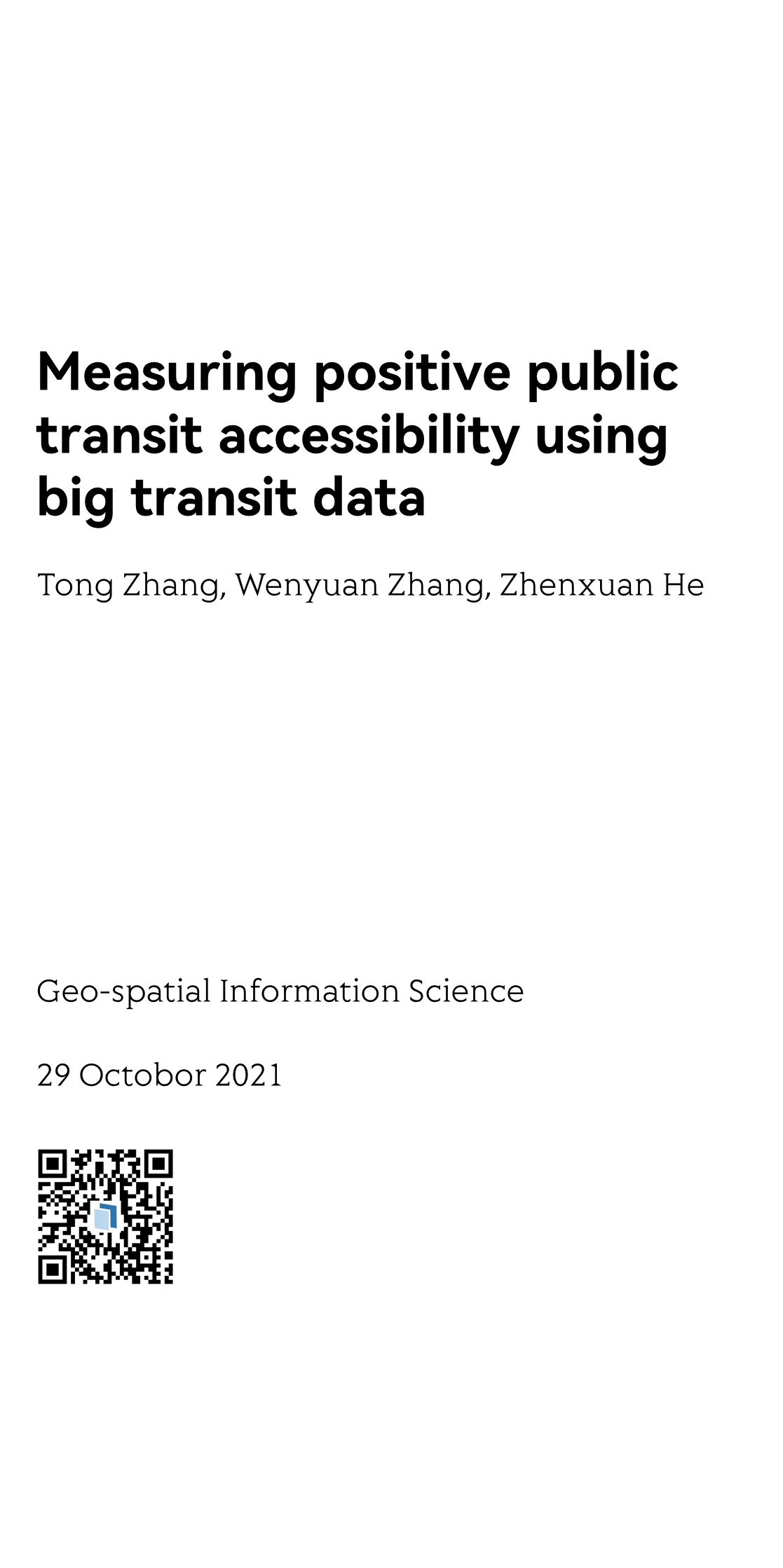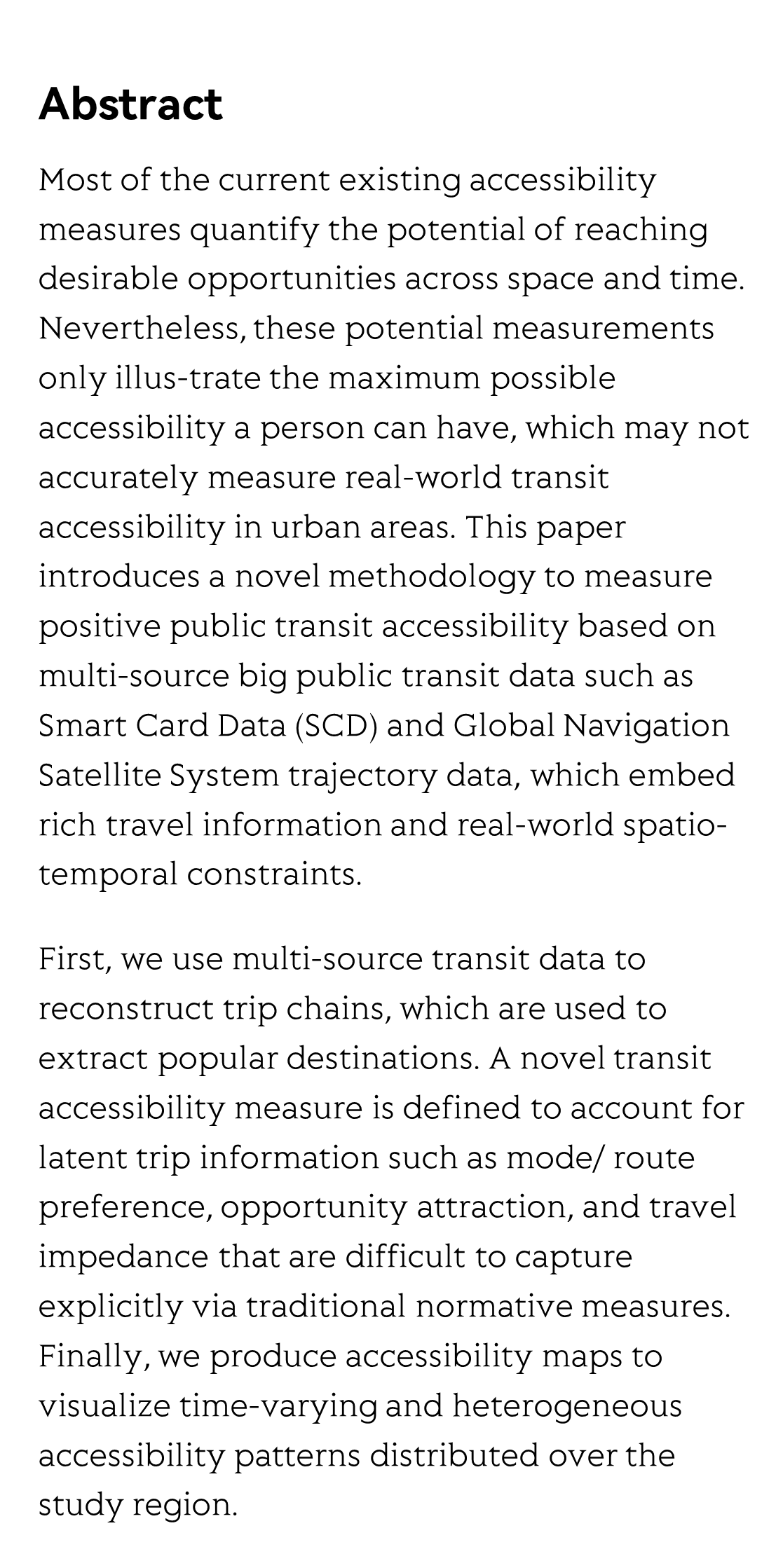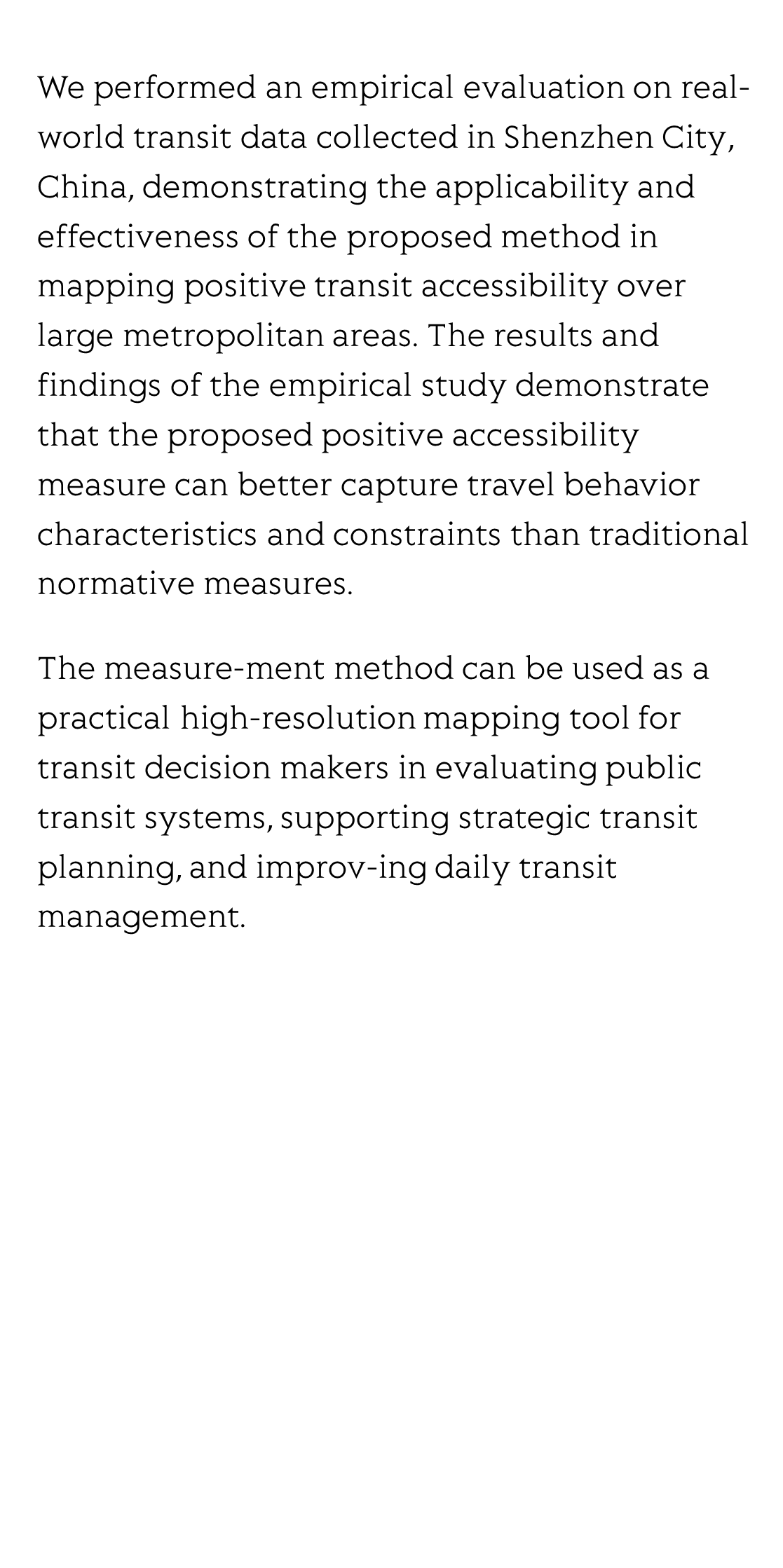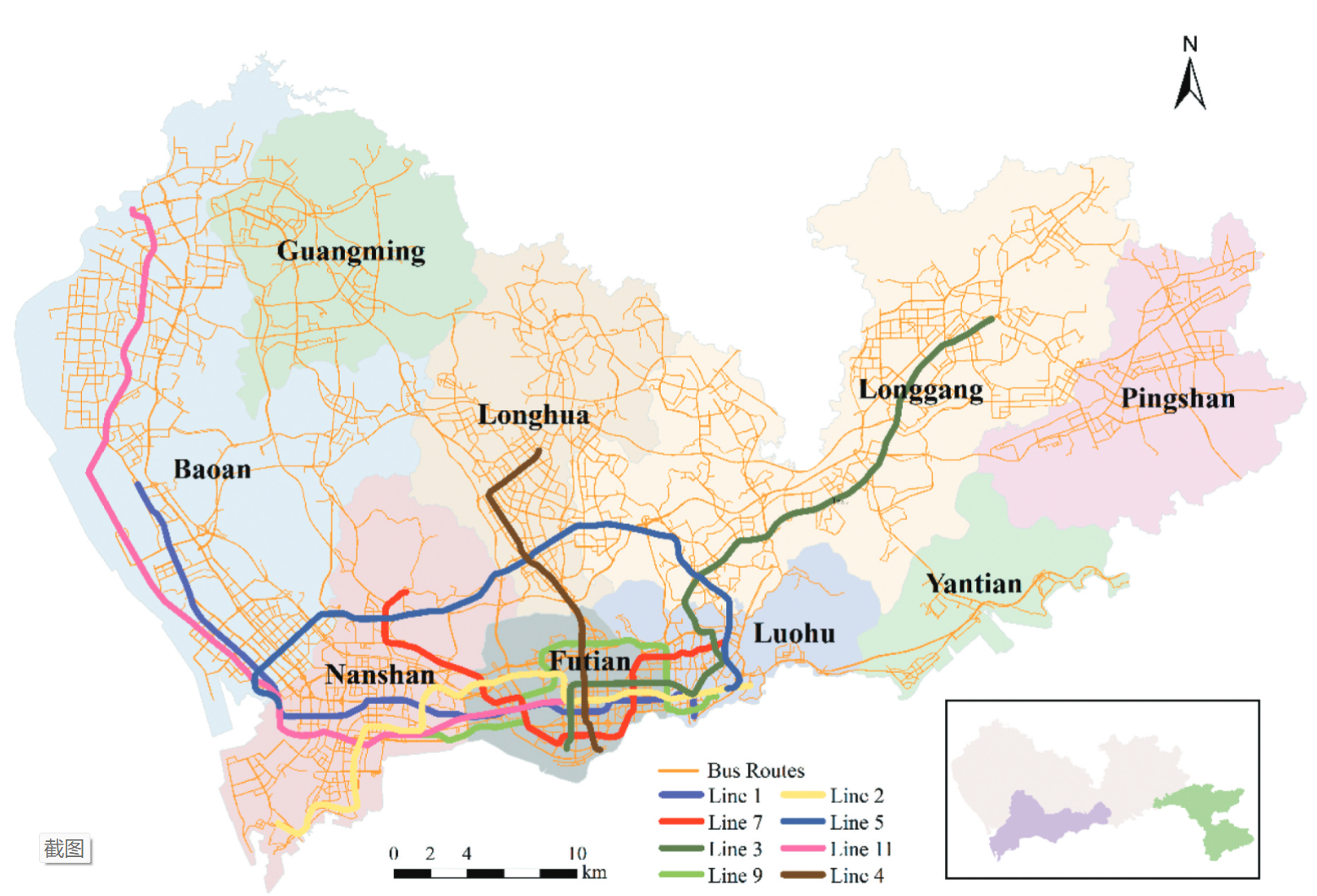(Peer-Reviewed) Measuring positive public transit accessibility using big transit data
Tong Zhang 张彤 ¹, Wenyuan Zhang 张闻远 ², Zhenxuan He 何振轩 ¹
¹ State Key Laboratory of Information Engineering in Surveying, Mapping and Remote Sensing, Wuhan University, Wuhan, China
中国 武汉 武汉大学测绘遥感信息工程国家重点实验室
² Department of Computer Science and Engineering, New York University, New York, NY, USA
Abstract
Most of the current existing accessibility measures quantify the potential of reaching desirable opportunities across space and time. Nevertheless, these potential measurements only illus-trate the maximum possible accessibility a person can have, which may not accurately measure real-world transit accessibility in urban areas. This paper introduces a novel methodology to measure positive public transit accessibility based on multi-source big public transit data such as Smart Card Data (SCD) and Global Navigation Satellite System trajectory data, which embed rich travel information and real-world spatio-temporal constraints.
First, we use multi-source transit data to reconstruct trip chains, which are used to extract popular destinations. A novel transit accessibility measure is defined to account for latent trip information such as mode/ route preference, opportunity attraction, and travel impedance that are difficult to capture explicitly via traditional normative measures. Finally, we produce accessibility maps to visualize time-varying and heterogeneous accessibility patterns distributed over the study region.
We performed an empirical evaluation on real-world transit data collected in Shenzhen City, China, demonstrating the applicability and effectiveness of the proposed method in mapping positive transit accessibility over large metropolitan areas. The results and findings of the empirical study demonstrate that the proposed positive accessibility measure can better capture travel behavior characteristics and constraints than traditional normative measures.
The measure-ment method can be used as a practical high-resolution mapping tool for transit decision makers in evaluating public transit systems, supporting strategic transit planning, and improv-ing daily transit management.
Flicker minimization in power-saving displays enabled by measurement of difference in flexoelectric coefficients and displacement-current in positive dielectric anisotropy liquid crystals
Junho Jung, HaYoung Jung, GyuRi Choi, HanByeol Park, Sun-Mi Park, Ki-Sun Kwon, Heui-Seok Jin, Dong-Jin Lee, Hoon Jeong, JeongKi Park, Byeong Koo Kim, Seung Hee Lee, MinSu Kim
Opto-Electronic Advances
2025-09-25
Dual-frequency angular-multiplexed fringe projection profilometry with deep learning: breaking hardware limits for ultra-high-speed 3D imaging
Wenwu Chen, Yifan Liu, Shijie Feng, Wei Yin, Jiaming Qian, Yixuan Li, Hang Zhang, Maciej Trusiak, Malgorzata Kujawinska, Qian Chen, Chao Zuo
Opto-Electronic Advances
2025-09-25







